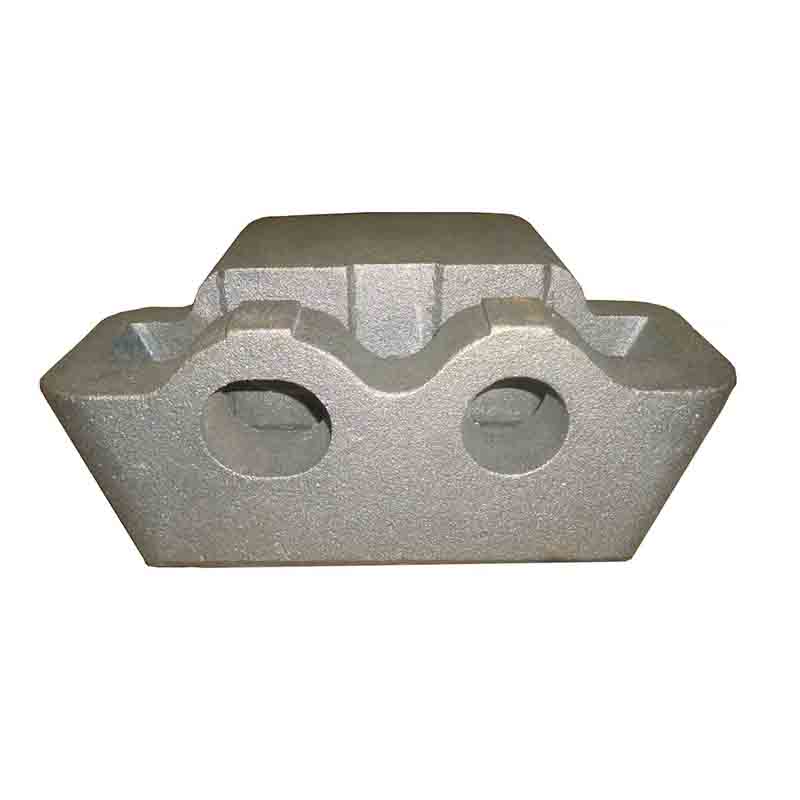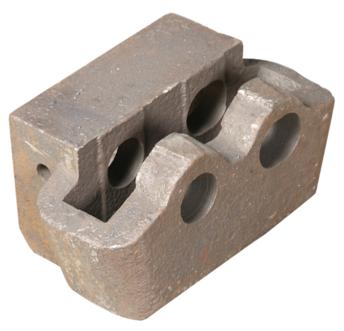The cast iron water main pipe and related products including centrifugally cast iron, bell and spigot ductile iron pipe, cast iron drain pipes, and cast iron heating pipes, have remained fundamental solutions in urban, industrial, and civil water transport and infrastructure. As cities expand and industrial demands intensify, the **technology and manufacturing processes** for these piping systems continue to evolve, focusing on improved strength, corrosion resistance, and customizability.
This in-depth industry overview breaks down key manufacturing flows, technical parameters, **trend analysis** with data visualizations, and detailed case studies. Dive in to understand how state-of-the-art innovations in cast iron water main pipe production — exemplified by products like the cast iron water main pipe — are redefining global water supply, drainage, and process piping in key industries.
Industry Landscape & Market Trends (2024)
- Market Size (2023): USD 6.2 Billion
- Projected CAGR (2024–2029): 3.5%
- Top Growth Regions: Asia-Pacific, North America, Middle East
- Key Drivers: Urban infrastructure growth, aging pipe replacement, industry upgrades, strict environmental regulations
Source: MarketsandMarkets, Mordor Intelligence

Technical Parameter Table: Cast Iron Water Main Pipe Core Specs (2024 Edition)
| Parameter | Gray Cast Iron Pipe | Ductile (SG) Cast Iron Pipe | Centrifugally Cast Iron Pipe |
|---|---|---|---|
| Typical Diameter (DN) | DN80–DN1200 | DN80–DN2600 | DN100–DN3000 |
| Standard Length | 3–6 m | 6–18 m | 4–12 m |
| Wall Thickness (mm) | 7–22 | 6–30 | 5–25 |
| Material Standard | ISO 2531, EN 545 | ISO 2531, EN 545/598, AWWA C151 | ANSI A21, ISO 4179 |
| Pressure Rating (PN/psi) | PN10–16/150–232 | PN25/363 | PN10–25/150–363 |
| Liner/Coating | Cement-lined, Bitumen | Epoxy, Zinc, Bitumen | Epoxy, Bituminous, Polyethylene |
| Service Life | 40–60 years | 60–100 years | 50–80 years |
| Main Applications | Municipal Water, Drainage | Drinking Water, Gas, Industrial | Water Main, Sewage, Process Piping |
Evolving Technologies: From Centrifugally Cast to Ductile Iron Innovation
With the centrifugally cast iron pipe manufacturing method, molten iron is poured into a rapidly spinning mold. The centrifugal force ensures high-density material distribution, yielding exceptional wall thickness uniformity and outstanding mechanical properties. This process, as referenced by ISO 2531, lays the foundation for the industry’s most reputable products.
- Centrifugally Cast Iron: Delivers compact, defect-free pipe structure, widely used for both pressure and gravity-fed flow systems.
- Bell and Spigot Ductile Iron Pipe: Features push-on and mechanical joint ends, ensuring simple installation and robust, leak-free connections even in seismically active areas.
- Cast Iron Drain Pipes for Sale: Offered in varying wall thicknesses and linings; crucial for long-term, maintenance-free underground drainage.
- Cast Ductile Iron Pipe: Scientifically alloyed with nodular graphite to achieve extraordinary tensile (420–520 MPa) and yield strengths (≥300 MPa), per ASTM A536.
Manufacturing Process Flow: Cast Iron Water Main Pipe
 Stepwise Process with Diagrammatic Flow:
Stepwise Process with Diagrammatic Flow:- Raw Material: Strict selection of foundry-grade pig iron and alloys (Si, Mn control)
- Centrifugal Casting: Liquid iron rapidly solidifies under G-force, creating dense, smooth bore pipes
- Annealing: Relieves internal stresses, stabilizes microstructure — essential for ductility
- CNC Machining: Accurate sizing of bells, spigots, and joint faces (±0.15mm tolerance)
- Testing: All pipes undergo hydrostatic (pressure) and X-ray/flaw detection in compliance with ISO 2531/EN545 or ANSI/AWWA standards
Product Focus: Cast Steel Rail Seat for Scraper Conveyor in Coal Mining Machinery and Industry
The Cast Steel Rail Seat for Scraper Conveyor is a high-precision, wear-resistant component engineered for the rigorous environments of coal mining. Manufactured using advanced casting, heat treatment, and CNC finishing techniques, this product ensures exceptional dimensional stability and long-term reliability under heavy loads.
- Material: High-manganese or alloyed cast steel (optimizing abrasion & impact resistance)
- Standards: Custom design per ISO 9001:2015, entirely traceable production
- Applications: Underground coal conveyors, mining machinery rail seats, heavy-duty support brackets
- Surface Treatment: Anti-corrosive zinc/epoxy coatings, optional hardfacing
- Service Life: Up to 5x longer than conventional welded supports

Product Comparison: Cast Iron Water Main Pipe vs. Main Market Alternatives
| Feature | Cast Iron Water Main Pipe | Ductile Iron Pipe | PVC Pipe | Steel Pipe |
|---|---|---|---|---|
| Service Life | 60–100 years | 80–120 years | 20–50 years | 30–60 years* |
| Corrosion Resistance | High (lining + coat) | Very High (improved material) | Excellent (polymer base) | Variable (depends on lining) |
| Strength | Excellent | Superior | Low–Medium | Very High |
| Environmental Impact | Low (100% recyclable) | Low | Medium–High (polymer waste) | High (energy intensive) |
| Joint Type | Bell & Spigot / Flanged | Push-on, MJ, Flanged | Solvent weld / gasket | Welded, Flanged |
| Typical Failure Mode | Localized corrosion (rare) | Ductile failure (rare) | Brittle fracture, joint leak | Corrosion or weld failure |
*Steel pipes can achieve longer lifespans with advanced linings and cathodic protection.
Key Parameters of Cast Steel Rail Seat for Scraper Conveyor: Data Visualization
- Rail Seat Market by Application Share (2024):
- Underground Coal Conveyor: 66%
- Mining Machinery: 22%
- Material Handling: 8%
- Others: 4%
Industry Certifications, Authority, and Service Track Record
Industry Reputation: Over 18 years of service to municipal, petrochemical, mining, and metallurgical sectors in 34 countries.
Major Clients: Sinopec, State Grid, Rio Tinto, Tata Projects, ThyssenKrupp.
Traceability: Product batches identifiable via embedded QR/barcode per order.
Application Cases & User Feedback
- Application: Urban water distribution network upgrade
- Pipe Type: DN600 Ductile Iron, Cement Lined
- Result: Reduced leakage rates from 9.4% to 1.2%, with system operation downtime cut by 47% (Source: PUB Annual Report)
Case 2: Shanxi Coal Mining Group (2022)
- Component: Cast Steel Rail Seat for Scraper Conveyor
- Advantage: Achieved 4.7x wear life vs. standard supports, zero failure during annual audit, certified under ISO 9001:2015 inspection
User Feedback:
- “The upgraded cast iron water main pipe system delivered 30% energy cost saving due to smoother bore and fewer leak points. Regulatory and lab tests proved world-class quality.” — Project Manager, European EPC contractor
Customized Solutions: Support for OEM, Engineering, and Project Needs
- Design and production based on supplied drawings/samples
- Available linings: cement, fusion-bonded epoxy, PE/PVC outlet sleeves, etc.
- Performance simulation and stress calculation per project requirements
- Quality inspection video & data archives supplied with each batch

Project Delivery, Warranty & Support Commitments
- Lead Time: Standard: 21–35 days per container111; Faster for common spec stock
- Warranty: 18–60 months, extending based on project size/application
- Post-sale: 24/7 technical support, onsite installation guidance, lifetime traceability of critical parts
- Certifications: Complete ISO/AWWA conformance, detailed batch inspection reports, and independent third-party certifications available upon request
FAQ: Professional Questions about Cast Iron Pipe Systems
Summary: Why Choose Cast Iron Water Main Pipe for Modern Infrastructure?
- Decades of proven reliability in harsh industrial, municipal, and civil environments
- Best-in-class strength-to-weight, corrosion barriers, and seamless connection systems
- Backed by rigorous international certification and thousands of satisfying independent lab reports
- Direct OEM support for special engineering needs and 24/7 technical consultancy
- Eco-friendly — 100% recyclable and lower cradle-to-grave CO2 footprint vs. many alternatives
[1] PUB Singapore Annual Report 2023 – https://www.pub.gov.sg/
[2] “Ductile Iron Pipe and Fittings: International Experience and Best Practices”, IFAT Forum (2023) – IFAT Forum
[3] ISO 2531, “Ductile iron pipes, fittings, accessories and their joints” – ISO Official
[4] “Material Selection for Water Pipes: Comparison and Guidance,” Water Online Journal – WaterOnline


